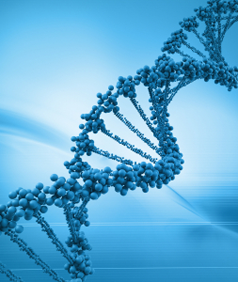Genetic Analysis Points to Potential Bladder Cancer Targets
As part of The Cancer Genome Atlas project, a new study aimed at understanding the molecular basis of bladder cancer has identified several potential drug targets.
A new study has identified several potential drug targets in bladder cancer.

A collaboration aimed at understanding the molecular basis of bladder cancer between The Cancer Genome Atlas (TCGA), the National Cancer Institute (NCI), and the National Human Genome Research Institute (NHGRI) has identified several potential drug targets for the disease.
There are currently no approved targeted agents to treat bladder cancer.
Published in the journal Nature, the study has identified 32 recurrent mutations in bladder cancer. Understanding the genomic landscape of a tumor type can help researchers develop new therapies, define the natural history and progression of the cancer, and realize new monitoring and diagnostic methods.
Samples from 131 muscle-invasive high-grade urothelial tumors from treatment-naive patients were analyzed. The team generated data on the DNA, RNA, and protein spectrums of the tumors. Potential therapeutic targets were identified in 69% of the tumors analyzed. The mutations were in genes that function in cell cycle regulation, chromatic regulation, and kinase signaling pathways. Nine of the mutations have not been previously reported in any cancer studied. Almost 50% of the tumors had a TP53 mutation. The TP53 gene codes for the p53 tumor suppressor protein. Mutations in the RAS pathway, commonly mutated in many cancers and necessary for growth and development, were found in 44% of the tumors. The ERBB2 gene was also frequently mutated. Aberrant fusions of genes in the mTOR/PI3K pathway (20% of the cases) and the FGFR3 gene (12% of cases) were also common.
The authors found that mutations in genes that regulate chromatin were more frequent than in other cancers studied (they found at least one inactivating mutation in a chromatin regulatory pathway gene in 76% of samples).
“Drugs that target chromatin modifications-for example, recently developed agents that bind acetyl-lysine binding motifs (bromodomains)-might prove useful for treatment of the subset of bladder tumors that exhibit abnormalities in chromatin-modifying enzymes,” concluded the authors in their discussion.
In several cases, viral DNA from the HPV serotype 16 and other viruses were identified, suggesting that viral infections could contribute to bladder cancer.
“This project has dramatically improved our understanding of the molecular basis of bladder cancers and their relationship to other cancer types,” said study author John N. Weinstein, MD, PhD, chair of the department of bioinformatics and computational biology at the MD Anderson Cancer Center, Houston, Texas, in a statement. “In the long run, the potential molecular targets identified may help us to personalize therapy based on the characteristics of each patient's tumor.”
Seventy-two percent of the tumors were from past or current smokers, consistent with epidemiological data that suggests a link between smoking and bladder cancer. But unlike the distinct molecular profile of lung cancers in those with a smoking history vs never smokers, the mutational landscape of bladder tumors were the same regardless of the patient’s smoking history.
The RNA sequencing analysis identified four different expression subtypes.
Studies such as this allow for comparisons with other tumor types and the development and use of agents that can work across different tumor types based on common aberrant pathways and gene mutations. “We've organized our medical care around the affected organ system,” said study author Seth Lerner, MD, chair in urologic oncology at Baylor College of Medicine, Houston, Texas, in a statement. “We have thought of each of these cancers as having its own characteristics unique to the affected organ. Increasingly, we are finding that cancers cross those lines at the molecular level, where some individual cancers affecting different organs look very similar.”